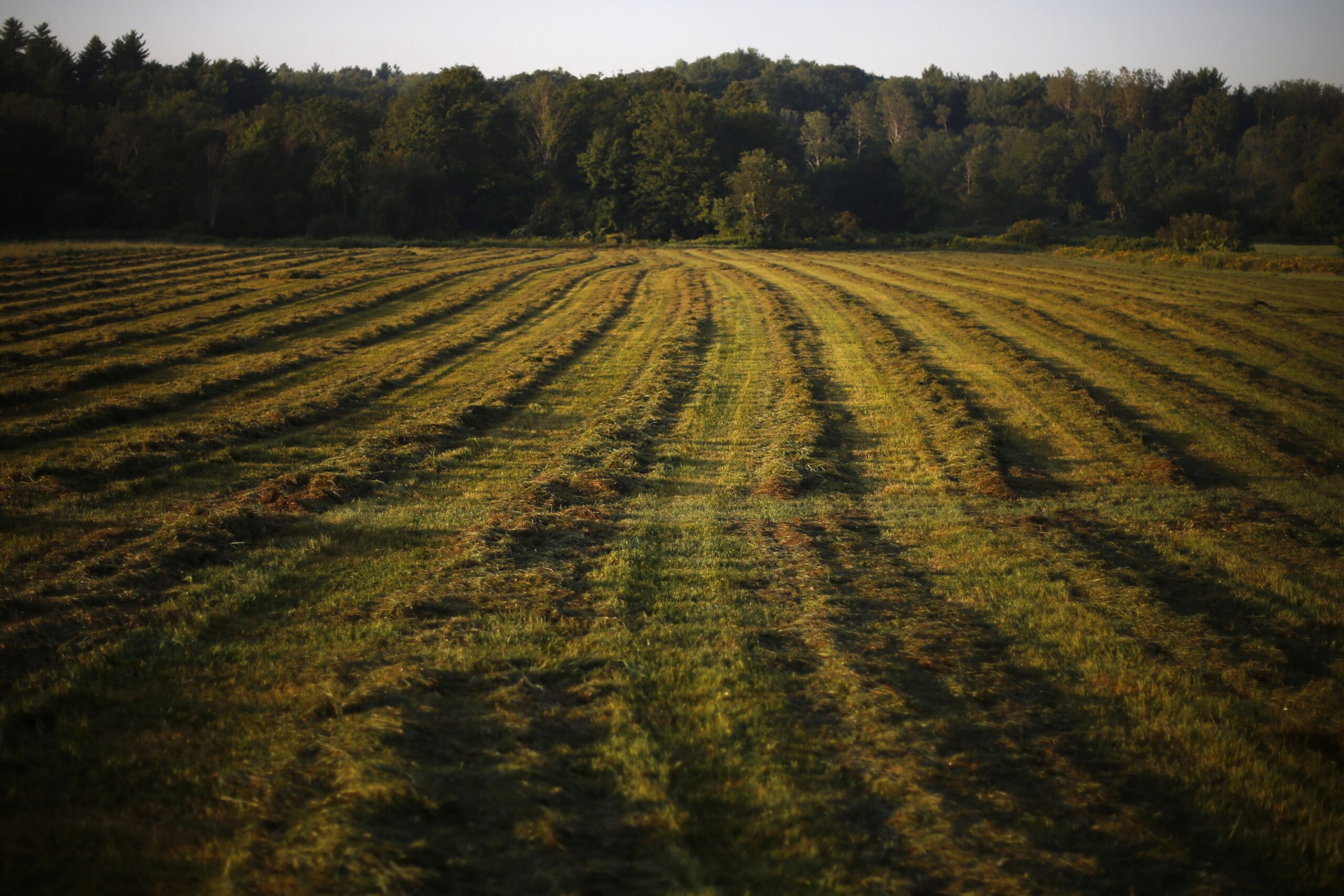News about PFAS, or per- and polyfluoroalkyl substances, can be overwhelming.
The “forever chemicals” have been found in drinking water, soil, firefighting foam, fish and the blood of animals and people — to name a handful.
The group of thousands of manufactured chemicals have been used in everyday products such as nonstick cookware and fabric stain protectors, and they break down slowly, over time.
News with a little more humanity
WPR’s “Wisconsin Today” newsletter keeps you connected to the state you love without feeling overwhelmed. No paywall. No agenda. No corporate filter.
Exposure to two of the most studied PFAS – PFOA and PFOS – has been linked to increased risk of cancers, reduced response to vaccines, decreased fertility and developmental delays.
In August 2022, Wisconsin established a drinking water standard of 70 parts per trillion, or ppt, for PFOA and PFOS combined and individually.
The state is in the process of creating groundwater standards for PFAS. The Wisconsin Department of Health Services has recommended groundwater standards for 18 PFAS, including 20 ppt for PFOA and PFOS, and the policy-setting Wisconsin Natural Resources Board is planning to consider DHS’ standards for PFOA, PFOS and two other PFAS substances through a rulemaking process that lasts 30 months.
PFAS contamination in the news and the impact the chemicals have on people’s health are two reasons why Jena Emmert reached out to WPR’s WHYsconsin with a question about PFAS: With so many issues around PFAS in our area, what can we do to ensure we have safe drinking water?
“We hear so much about PFAS, especially right now because more people are paying attention to it,” Emmert said. “And it’s like, ‘Oh, PFAS can cause cancer. They can reduce how effective vaccines are.’ What a scary thing to know that that’s in our drinking water right now.”
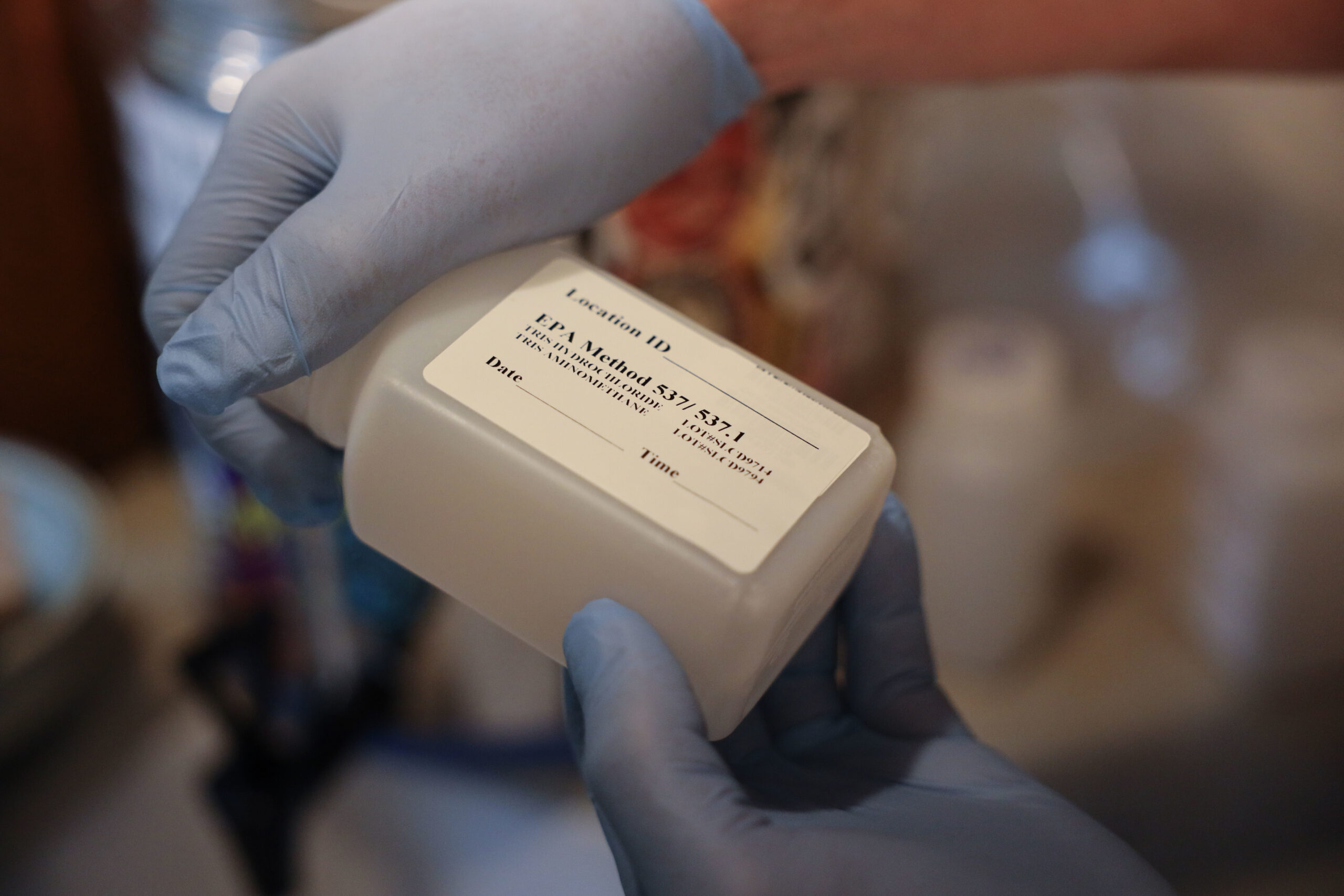
How to make sure you’re drinking safe water
Testing is the only way to know if PFAS are in a drinking water source.
Whether you get water from a private well, municipality or somewhere else, you can take a sample of your water and have it tested.
To have water tested, you contact a certified lab and ask for a sampling kit and then have the sample tested at the lab, said Kyle Burton, field operations director within the Wisconsin Department of Natural Resources’ Bureau of Drinking Water and Groundwater.
The DNR also has information on how to correctly use a testing kit and what labs are certified to run the results.
It can cost about $400 to test a sample for PFAS, Burton said. He suggests that if you get your drinking water from a municipal drinking water system or other type of public water system, first see if the water has already been tested for PFAS using the DNR’s “Drinking Water System Portal” or the agency’s interactive map. You can also ask your local water utility what they’re doing to minimize PFAS levels, if they exist.
If you get your drinking water from a private well, you may want to consider testing for PFAS if you live near a site where there is reported PFAS contamination, DHS wrote in an email. The DNR suggests — but can’t require — private wells be tested annually for contaminants to ensure the water is safe.
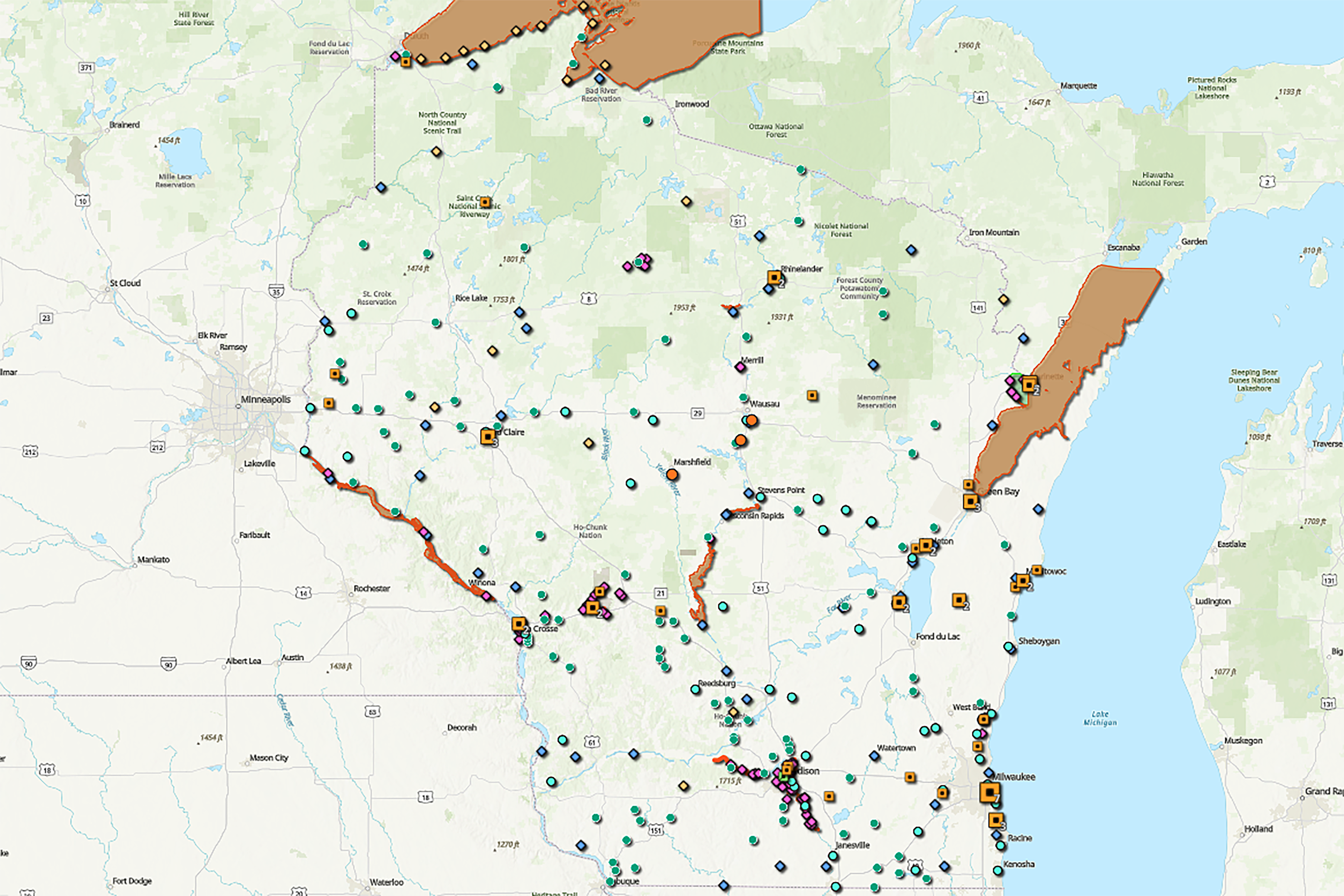
Precautionary measures to take if PFAS haven’t been found in your community or private well.
It’s recommended that everyone take steps to reduce their PFAS exposure because they are common in the environment, according to DHS.
To limit exposure to the chemicals, the agency recommends: people follow Wisconsin fish consumption advice; use healthy swimming practices; regularly vacuum to reduce exposure from dust and dirt; and limit contact with products that have PFAS.
Water filters or a water filtration system can be used as a precautionary measure, so long as you care for them properly. More on that below.
Burton said people can trust these systems, so long as they are maintained, and you can rely on the water quality data from municipalities.
“Municipalities, their sole purpose is to serve safe drinking water to their constituents. That is their goal. I mean, that is like their business model,” he said. “Municipalities are really partners with us in ensuring safe drinking water for their customers. Now, you know, safe means different things to everyone, right? So a trace amount of a contaminant may not be safe to some people and they may choose to additionally treat, which is perfect. People have the ability to make that choice.”
Safety measures to take if PFAS are found in my drinking water.
If you have tested your water for PFAS and the chemicals are found, you can use DHS’ online assessment tool to evaluate your results and see if they reach a level of concern for your health.
“If PFAS are present in your water at a level of health concern, we recommend that you use an alternate source for drinking, preparing beverages and foods that take up a lot of water (such as rice, oatmeal, and jello), and watering fruit and vegetable gardens. Some options include bottled water that has been filtered or purified, water from a source that has been tested for PFAS and doesn’t contain PFAS above the recommended standards, and water from a treatment system” certified by the American National Standards Institute and the National Sanitation Foundation, DHS wrote in an email.
If a private well has unsafe PFAS levels, drilling a new well could be an option. The DNR’s Well Compensation Grant can help with paying for a new well or treatment options. The grant program has eligibility requirements, which were expanded when Gov. Tony Evers allocated $10 million to the program. An applicant could receive up to $12,000.
“We want to make a dent in helping those folks that couldn’t afford to build a new well or complete a corrective action to get safe drinking water,” Burton said.
Some residents in the Town of Peshtigo and Town of Campbell have been using bottled water for drinking and cooking for years after PFAS polluted private wells, and some have installed water filtration systems.
People living near a PFAS contamination site should reach out to their local municipality and the DNR to learn what resources are available. Public water supply users living near such a site can also ask their local water utility what is being done to minimize PFAS levels.
Is a reverse osmosis filter worth the expense?
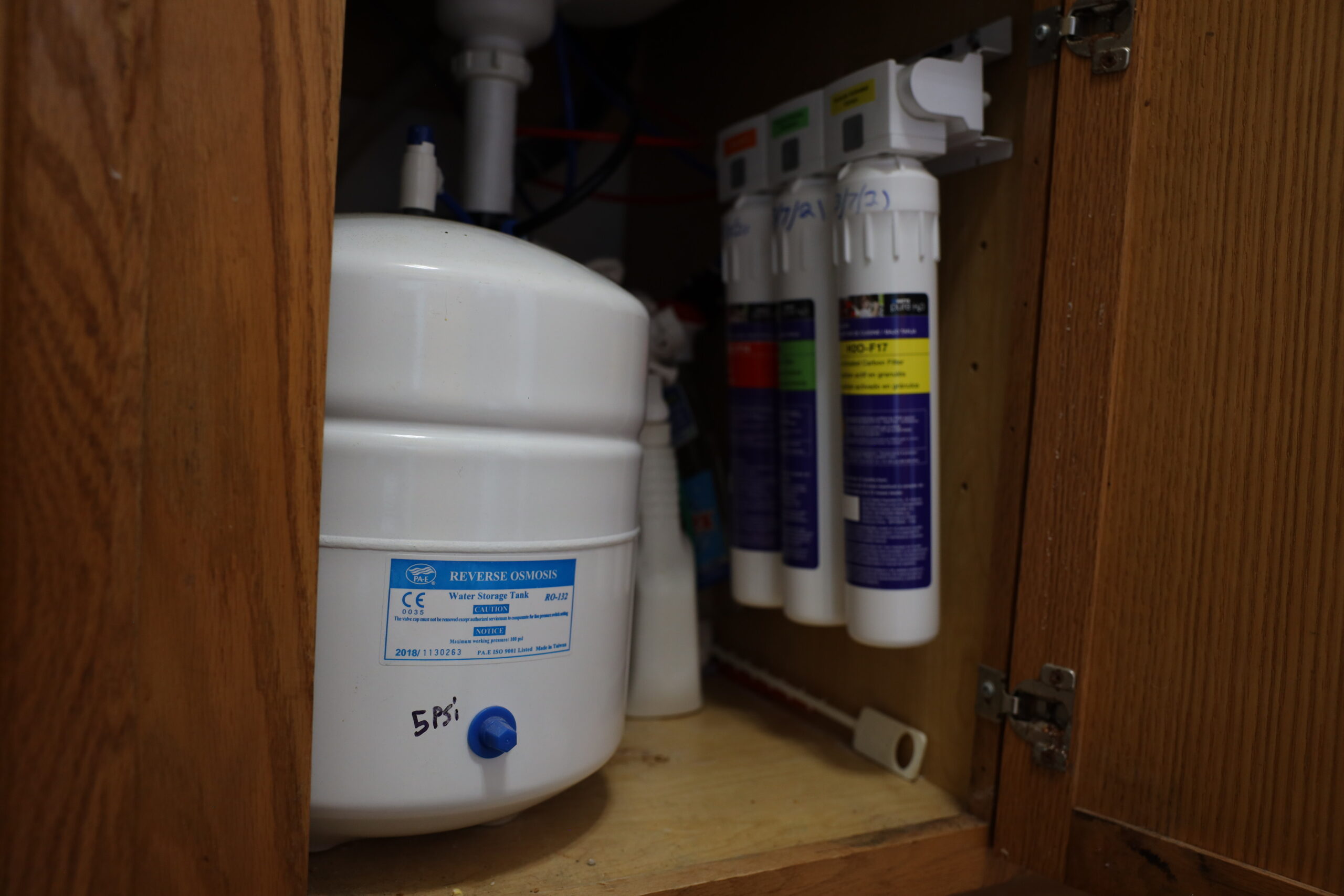
Wisconsin Watch has a detailed explainer on how to remove PFAS from tap and well water using filtration systems, and how each type of filtration system works.
The type of water filtration system chosen depends on the contaminants found and what you want to treat, according to DHS and Burton.
Treatment technology can be used in individual buildings as well as in homes at the point of entry — where water enters the home — or point of use — such as the kitchen faucet or pitcher with a filter.
This PDF from DHS describes the differences in filters, what they remove and how much they cost.
Burton stressed that regardless of the treatment method used, people have to take care of them.
“It’s so important to follow the manufacturer’s instructions on maintenance,” he said.
Filters work for removing PFAS and contaminants, and they can be used as a precaution.
The EPA also tracks methods that are successful and unsuccessful at removing PFAS.
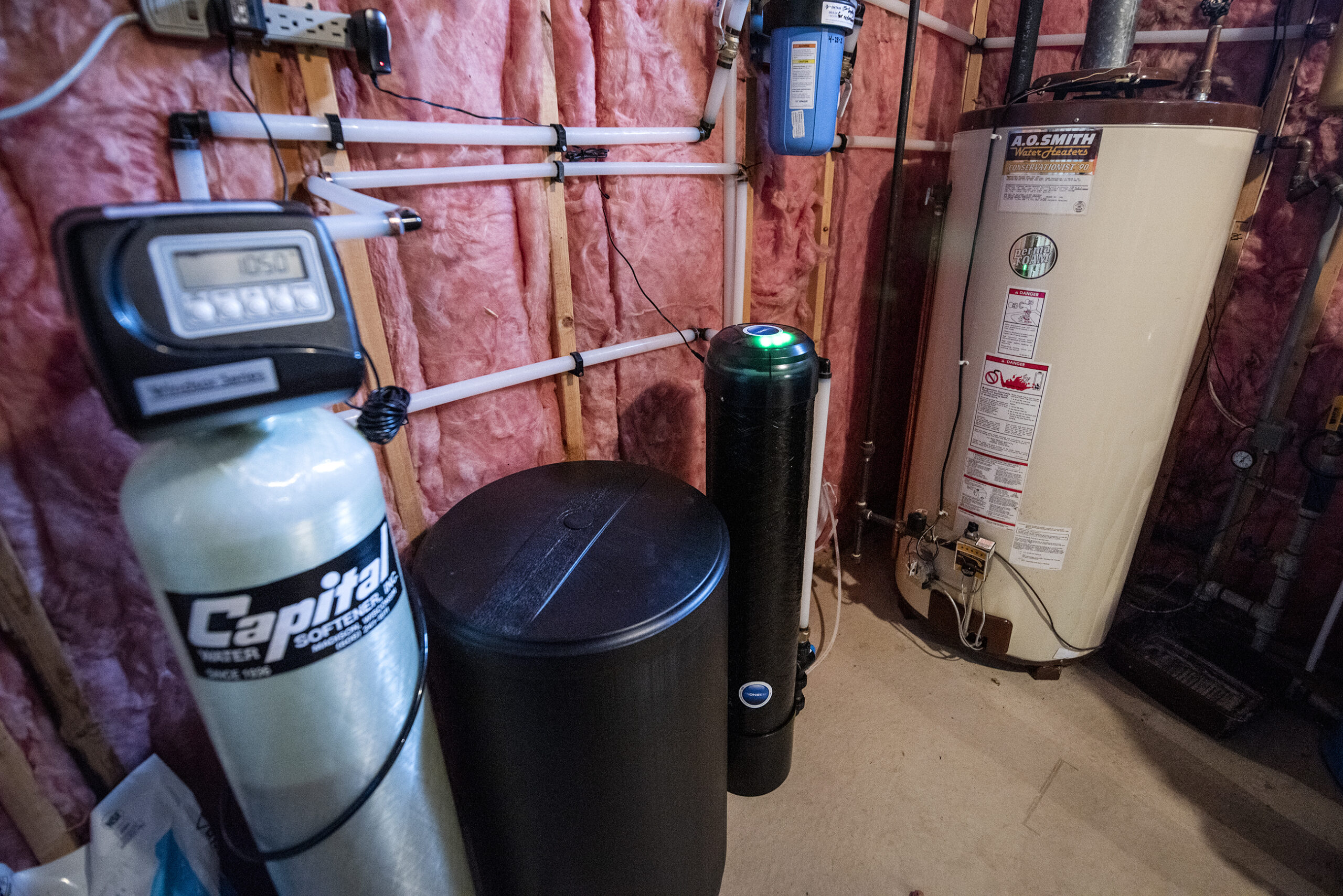
What regulations exist for landlords, student housing, affordable housing, apartments complexes or businesses to ensure safe drinking water?
Burton said most urban property owners, student housing, apartment complexes and businesses receive their water from municipalities, which are required to follow Safe Drinking Water Act standards and testing requirements.
There are places — such as some businesses, mobile home parks, subdivisions and schools — that are classified as public water systems, which are required to monitor their drinking water for PFAS quarterly as of this year, according to the DNR.
In Wisconsin, a place is considered a public water system if it uses a well for drinking water and serves water or has water available for drinking and serves at least 25 people daily for at least six months a year. For example, a factory with 25 or more employees or a subdivision with 25 residents.
Public water systems that have PFAS levels above 70 ppt are required to reduce PFAS levels through treatment or a new safe source of drinking water, Burton said. Public water systems with PFAS levels above DHS’ groundwater recommendations are required to inform customers through a public notice that includes information about PFAS and recommendations for consumption.



